-
TrackoBit
Manage commercial vehicles with the new-age Fleet Management Software
TrackoBit -
TrackoField
Streamline your scattered workforce with Field Force Management Software
TrackoField -
Features Resources
-
Blog
Carefully curated articles to update you on industrial trends. -
White Paper
Insightful papers and analysis on essential subject matters. -
Glossary
Explore an alphabetical list of relevant industry terms. -
What’s New
Get TrackoBit & TrackoField monthly updates here. -
Case Study
Explore the cases we solved with our diverse solutions. -
Comparisons
Compare platforms, features, and pricing to find your best fit.
-
About Us
Get to know TrackoBit: our team, ethos, values, and vision. -
Careers
Join the most dynamic cult of coders, creatives and changemakers. -
Tech Support
Learn about our technical support team and services in detail. -
Events
Check out the exhibitions where we left our marks and conquered. -
Contact Us
Connect with us and let us know how we can be of service.
How Fleet Telematics Solutions Help With Preventive Maintenance?
- Author:Anvesha Pandey
- Read Time:10 min
- Published:
- Last Update: October 7, 2025
Table of Contents
Toggle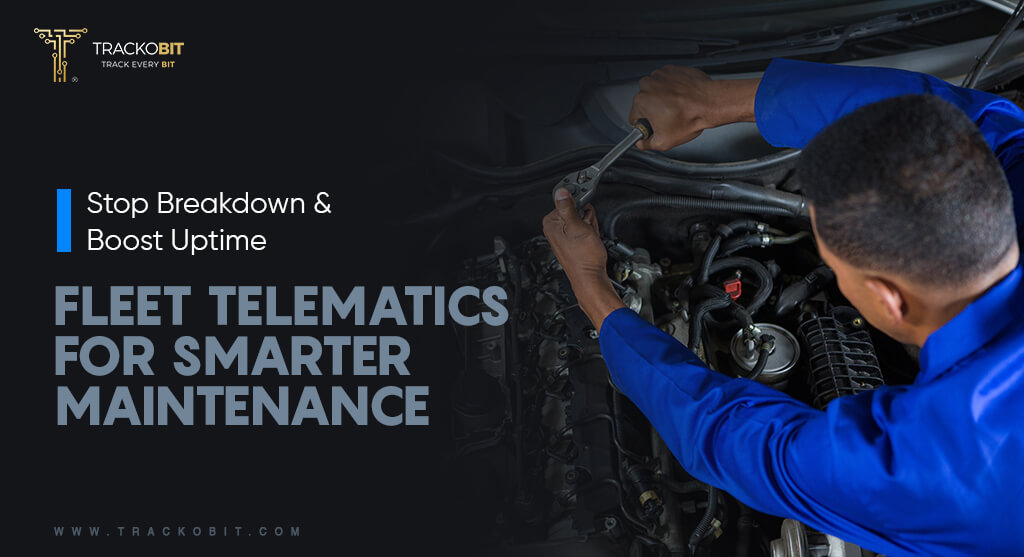
Searching for a piece that unfolds everything about how fleet telematics data can help improve the fleet’s maintenance cycle. ? Here’s everything answered.
Table of Contents
Toggle
Fleet managers understand the importance of having a successful maintenance strategy. They need to ensure that their vehicles on the roads are performing optimally, delivering consignments on time, and reducing TAT overall while keeping the operation’s cost under the budget. All this cannot be achieved through reactive maintenance, which often throws a wrench into this well-oiled machine.
Reactive maintenance, as the name suggests, involves waiting for a vehicle to break down before addressing the issue. This is where fleet telematics enters the scene, offering a data-driven solution to transform your maintenance strategy from reactive to proactive.
This blog explores how fleet telematics offers a data-driven approach to maintenance, helping you switch from reactive to proactive management.
But, before diving into maintenance management, let’s briefly explore the challenges businesses face without fleet telematics through a case study.
Read Blog – How to Reduce Idle Time for Your Fleet?
| CASE STUDY
ABC Transportation is a mid-sized transportation company that operates around 200 trucks. It has been facing significant challenges with vehicle breakdowns, which have led to increased downtime, repair costs, and customer dissatisfaction. Some of the highlighted challenges that came their way were
Then, the company decided to implement a fleet telematics system to address such problems. Now, guess how the results turned out to be –
Hence, by leveraging fleet telematics solutions, ABC Transportation overcame key maintenance challenges, leading to reduced operational costs, improved efficiency, and higher customer satisfaction. |
Why is Vehicle Maintenance Important?
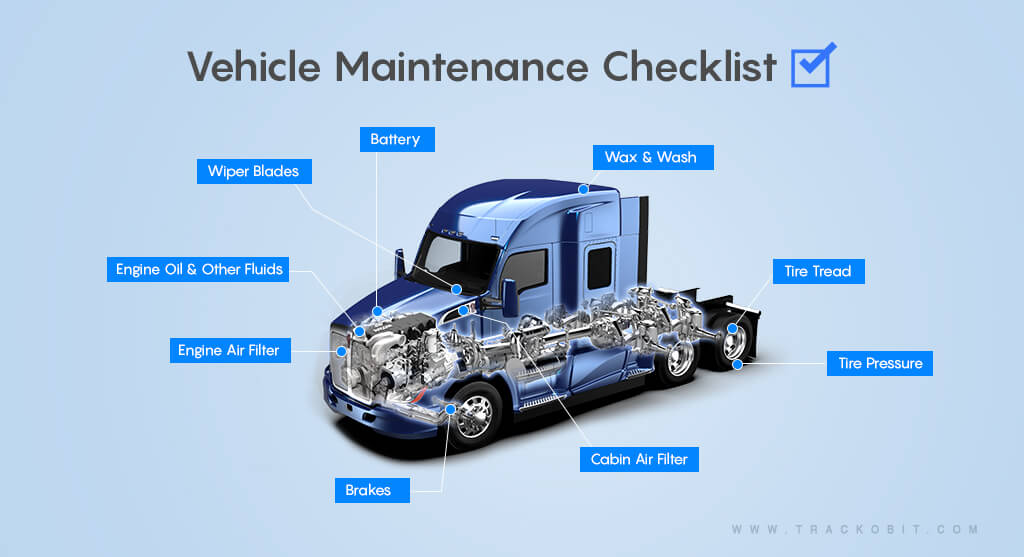
Vehicle maintenance is a critical aspect of owning and operating a vehicle, especially for a fleet-centric business. Regular vehicle maintenance ensures the vehicle’s longevity, safety, and efficiency, preventing unexpected breakdowns and costly repairs.
The below-mentioned points showcase why fleet maintenance is important.
-
Decreased Downtime
Proactive maintenance minimizes the chances of unexpected breakdowns that lead to significant downtime. This helps more time on the road, contributing to higher productivity and better service.
-
Cost Saving
Proactive maintenance saves a significant amount of money in the long run. Addressing minor issues in the beginning phases prevents them from escalating into major repercussions. For instance, changing the oil at regular intervals prevents engine damage that could result in costly engine repairs or replacements.
-
Fuel Efficiency
Undoubtedly, well-maintained fleets run more efficiently, which translates to better fuel economy. Some short-term vehicle inspection tasks like keeping tires properly inflated, replacing the air filters, and using the right oil can significantly improve the vehicle average, saving on fuel costs. In fact, according to the reports of Automotive Fleet Magazine, adequate maintenance can increase fuel economy by 40%.
-
Increased Longevity
Regular maintenance for sure enhances the lifespan of a vehicle. Routine checking and replacing worn-out parts help the vehicle remain in good working condition for a longer period.
All in all Vehicle maintenance is crucial for ensuring fleet operations run smoothly and efficiently, offering numerous benefits.
Now that we know why fleet maintenance is important, let’s just dig into how vehicle telematics amp up the game of fleet management.
How Fleet Telematics Improve Maintenance Management
Telematics plays a crucial role in improving maintenance management for fleets as it provides you with comprehensive vehicle performance data. This allows for preventive maintenance, helps with maintenance scheduling, and streamlines driver vehicle inspection reports (DVIRs).
Wondering how?
Here’s a detailed overview
-
Real-time Vehicular Data
Analyzing the vehicle’s performance with the help of telemetry data becomes quite easy and reliable. The systems collect and analyze data on various performance metrics (like engine performance, fuel consumption, tire pressure, and more). This helps fleet managers monitor the health of each vehicle in real time and also identify issues before they turn out to be major problems.
-
Maintenance Scheduler
Scheduling maintenance is the most prominent challenge without having a proper schedule. A scheduler available in fleet telematics software helps keep track of each vehicle’s service and upcoming maintenance needs.
The scheduler allows you to set the interval after which your vehicle should be duly visited for maintenance routine. You can effortlessly input the driving miles or months for maintenance routine.
The best part is that if you define driving miles as 7500 or 4500 miles and months as 6 months, the software will prompt alerts based on whichever of the two is early.
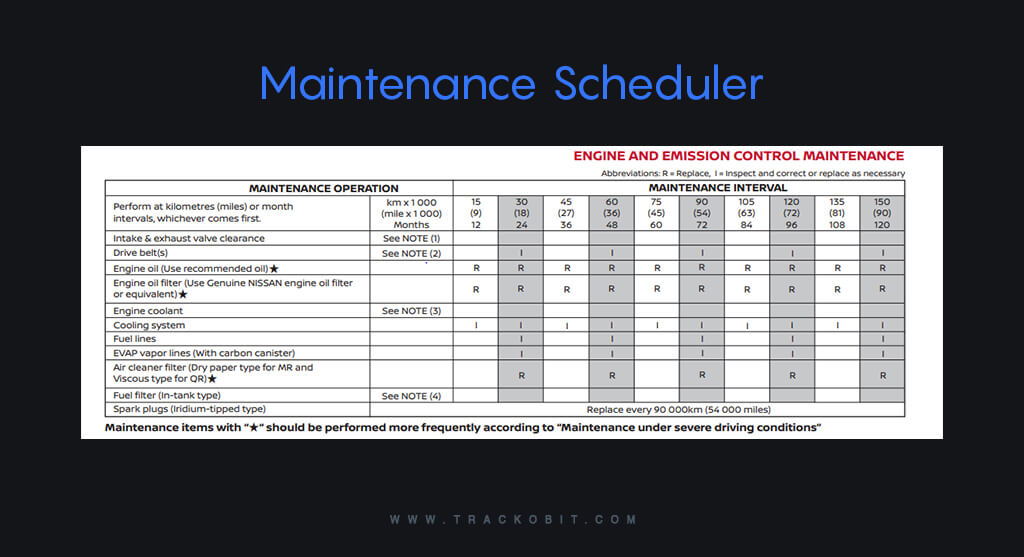
-
Preventive Maintenance
Telematics systems help in analyzing data trends to predict when a vehicle needs maintenance. Instead of relying solely on scheduled maintenance, telematics uses actual performance data to determine the optimal time for servicing. This proactive approach reduces the likelihood of unexpected breakdowns and extends the life of the vehicle.
Seems complicated?
Let us explain to you with the help of an example – Suppose data shows that a particular component, like brake pads, typically needs replacement after a certain mileage. Fleet managers can schedule maintenance just before this mileage is reached, ensuring the vehicle remains in good working order.
-
Streamlined Driver Vehicle Inspection Reports (DVIRs)
The solution eventually streamlines the DVIR process by allowing the drivers to complete and submit inspection reports electronically. This ensures regular, systematic inspections of vehicles, allowing for the early detection of potential issues before they escalate into major problems.
These routine inspections promote preventive maintenance, reducing the likelihood of breakdowns and costly repairs. Additionally, DVIR provides a documented history of vehicle conditions and maintenance activities, aiding in regulatory compliance and improving overall fleet efficiency.
-
Compliance Management
Being compliant with regulations like Pollution Under control Certificates and permits becomes necessary especially when you run a fleet-centric business. Telematics systems help ensure compliance with various regulations such as Pollution Under Control certificates and other important permits.
The systems help track the expiration dates of these documents and alert fleet managers when renewals are due, ensuring that the fleet operates within legal requirements.
-
Reminders and Alerts
Automated reminders and alerts notify managers and drivers about upcoming maintenance tasks, part replacements, or document renewals. These proactive notifications minimize downtime, improve fleet efficiency, and support effective maintenance management.
For instance, they can notify fleet managers and drivers when a vehicle is due for service, when a part needs to be replaced, or when a compliance or permit document is nearing its expiration date. These alerts help proactively manage the fleet, reducing downtime and increasing efficiency.
Overall, telemetry data through fleet management software lets fleet managers accurately monitor fleet maintenance needs and gauge overall vehicle health—all on a simplified dashboard.
| 📌Here’s an add-on
The combination of a telematics solution with video cameras is more like a successful marriage as it levels the game up of visibility more precisely. Well, do you want to oversee everything that’s happening all around your fleet? If “YES”, TrackoBit’s video telematics solutions can be your partner in this. From the in-cabin activities of your drivers to the driving patterns of your drivers, oversee all at a time and get notified. Interested? This valuable read will let you know everything in detail – What Is Video Telematics | How Does Video Telematics Works |
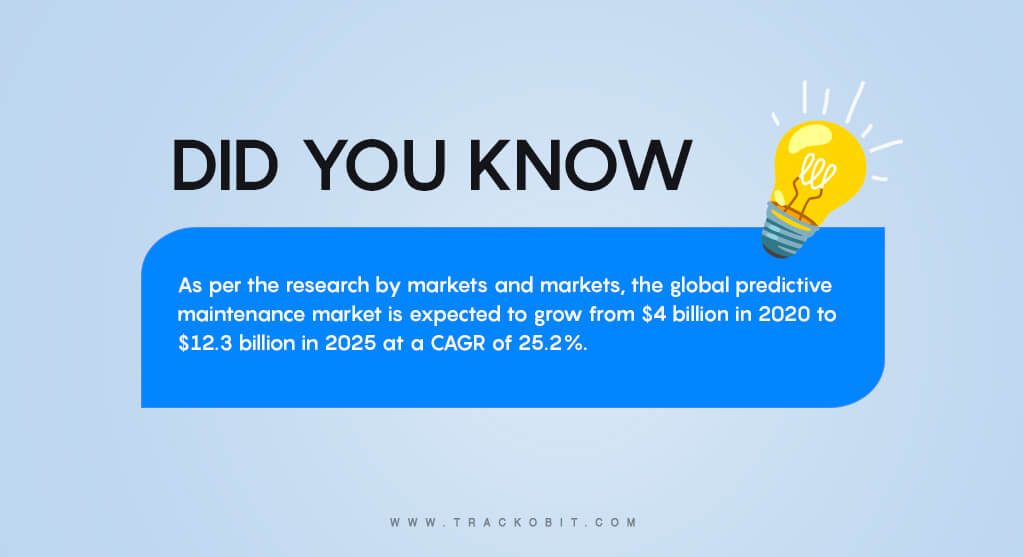
How Telematics Enhances Fleet Management
Telematics significantly enhances fleet management by integrating telecommunications and informatics, providing real-time data and analytics.
Telematics helps fleets reduce operating costs and improve asset ROI. Telemetry data around the fleet’s locational data, engine diagnostics, driving partners, idling time, and mileage details help improve efficiency and safety.
When you have telemetry data in hand, you have precise:
- Locational data helps you gauge real-time and historical location information, aiding in vehicle tracking and route planning.
- Fuel consumption data helps you identify fuel consumption, wastage, and potential theft.
- Engine diagnostics data alerting for maintenance needs, preventing breakdowns.
- Tyre Pressure data for real-time pressure warning, preventing poor tire health and potential accidents.
Well, that’s not all. When you have data on driving patterns, such as harsh braking and acceleration, it’s easy to coach drivers and reduce accident risks.
Overall, telemetry data enhances operational efficiency, safety, and cost-effectiveness in fleet management.
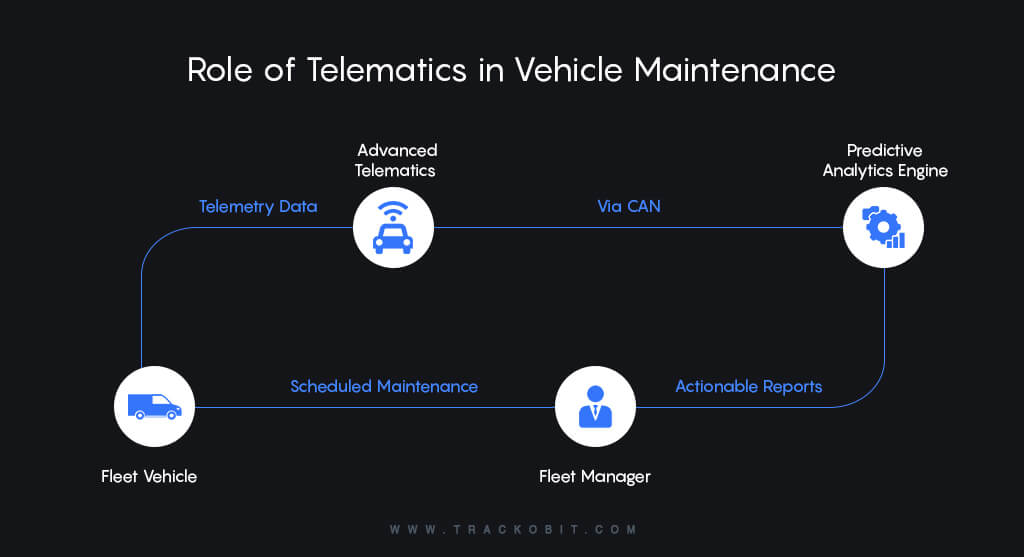
Difference Between GPS Systems and Fleet Telematics
The table below provides a better understanding of the difference between GPS and fleet telematics. It showcases how Fleet Telematics extends beyond the capabilities of basic GPS systems to provide comprehensive fleet management solutions.
| Feature | GPS (Global Positioning System) | Fleet Telematics |
| Definition | A satellite-based navigation system that provides location and time information in all weather conditions, anywhere on or near the Earth. | A system that uses telecommunication and informatics to track, monitor, and manage fleets of vehicles, providing data on location, vehicle performance, and driver behavior. |
| Purpose | Provides location tracking and navigation. | Monitors and manages vehicle and driver performance. |
| Data Provided | Provides just the vehicle’s location, speed, and direction. | Provides vehicle’s location, speed, fuel consumption, engine diagnostics, driver behavior, and more. |
| Real-Time Updates | Yes, typically updates the location in real time. | Yes, real-time data on multiple vehicle parameters. |
| Driver Behavior Monitoring | No. | Yes, includes monitoring of driving patterns, harsh braking, etc. |
| Maintenance Scheduling | No. | Yes, predictive maintenance and service scheduling. |
Want to know how this works in detail? – Understanding the Differences Between GPS Tracking and Telematics
Future of Fleet Telematics
Telematics has already changed the game of visibility and detailed insight. Still, we can already see that fleet telematics, especially in fleet management, is incredibly promising with advancements like AI, machine learning, and IoT. (It’s not like IoT and AI are something new; they’re already happening all around.)
Additionally, driver behavior monitoring has grown significantly over the period. The game of data capturing has amplified, as we can now have well-pixelated shots of events. Video telematics offers more than just adding dash cameras; high-definition video information is actively integrated into fleet management to coach and improve driver behavior, alert managers about risky situations, notify about incidents, and provide evidence.
To stay ahead, companies should focus on integrating these technologies to gain deeper.
insights and automation capabilities, ensuring more efficient operations and enhanced safety
Here’s a quick overview of the enhancements that can take place –
- Streamlined Data Capture- Connected vehicle APIs make data collection smoother and faster.
- Predictive Analytics- AI analyzes historical data to predict potential issues and optimize fleet management.
- Enhanced Driver Behavior- Video telematics provide visual evidence and improve driver safety and accountability.
Read Blog – How Will 5G Impact Vehicle Telematics?
Final Words
Maintaining your fleet, whether proactively or reactively, greatly impacts your vehicles’ lifespan. As a business owner relying on your fleet for operations, proactive maintenance is crucial—don’t second-guess it.
Moreover, fleet telematics systems equipped with fleet management software empower fleet managers to monitor maintenance needs accurately, optimize vehicle health, and ensure regulatory compliance—all through a user-friendly dashboard interface.
Here’s How TrackoBit Can Be Your Partner in Proactive Maintenance Schedule
Tired of unexpected breakdowns and sky-high bills?
TrackoBit’s full suite of fleet management solutions helps you schedule maintenance, cut down operational costs, and more.
GET,
- Easy DVIR inspections through the driver app.
- Real-time tire pressure and temperature monitoring.
- Alerts for critical issues to prevent breakdowns.
Become proactive with us!
Visit our website to learn more!
Anvesha is a communication specialist at TrackoBit. With a strong background in media and communications, she adds much-needed balance and brevity to TrackoBit’s... Read More
Related Blogs
-
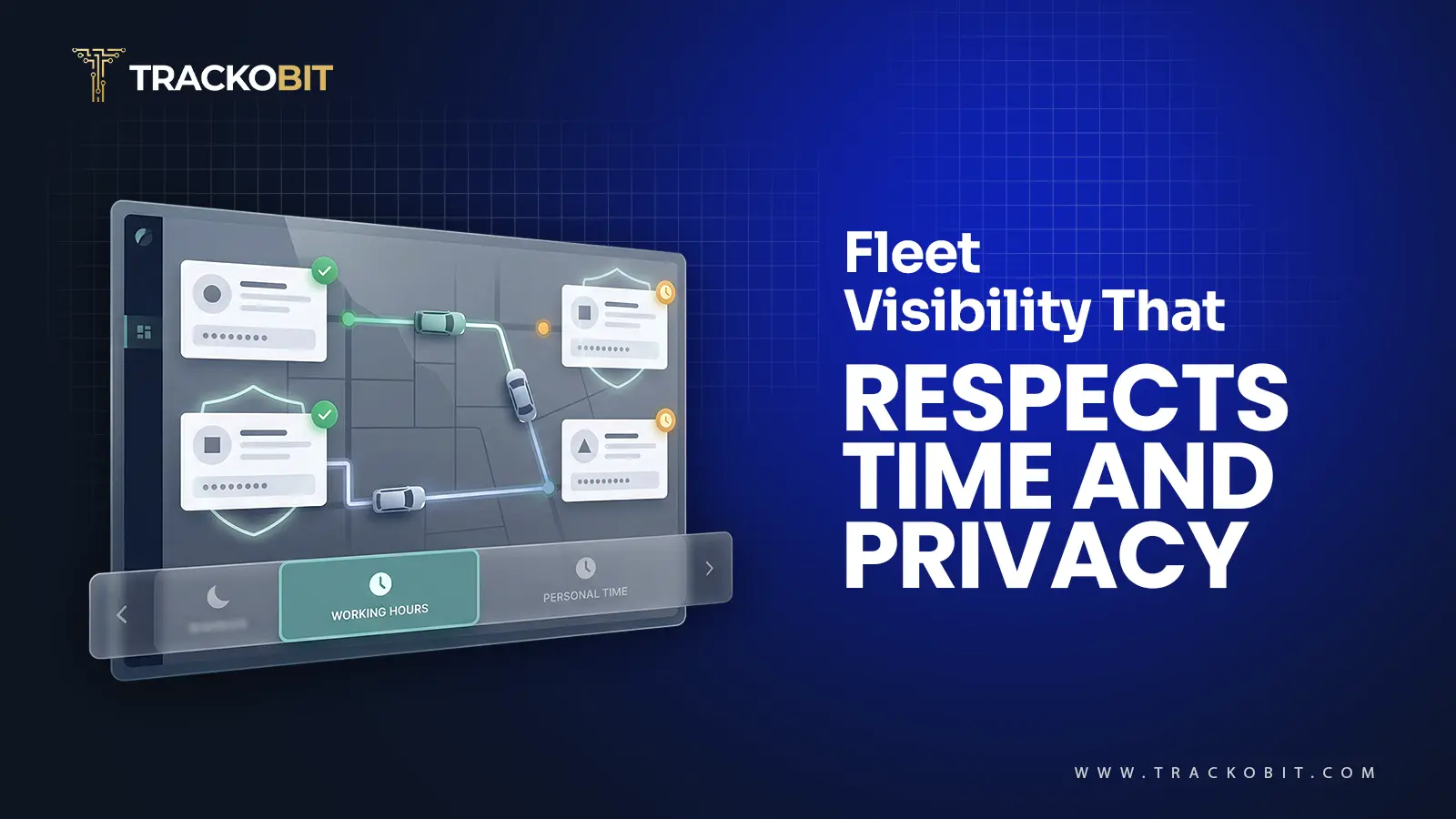
When Tracking Needs a Clock: Rethinking Fleet Visibility
Tithi Agarwal December 24, 2025Read on to understand why fleet tracking works better when it follows working hours. Because visibility should support operations, not…
-

What Makes TrackoBit’s Video Telematics Software Truly Next-Gen?
Shemanti Ghosh December 17, 2025TrackoBit’s video telematics software blends smart video intelligence with full server control. The result? Superior fleet reliability and safety.
-

Plug, Pair, Perform TrackoBit Introduces BLE Sensor Integration
Tithi Agarwal November 26, 2025TrackoBit’s BLE Sensor Integration enables wireless, real-time monitoring with faster installs and accurate insights. It improves fleet efficiency, visibility, and…
-

How to Use Driver Behavior Reports as a Sales Hook to Close Big Fleets
Tithi Agarwal October 16, 2025TrackoBit’s driver behavior reports empower fleet providers to win big contracts by showcasing safety, efficiency, and measurable ROI.

Subscribe for weekly tips to optimize your fleet’s potential!
Your inbox awaits a welcome email. Stay tuned for the latest blog updates & expert insights.
"While you're here, dive into some more reads or grab quick bites from our social platforms!"Stay Updated on tech, telematics and mobility. Don't miss out on the latest in the industry.
We use cookies to enhance and personalize your browsing experience. By continuing to use our website, you agree to our Privacy Policy.


































